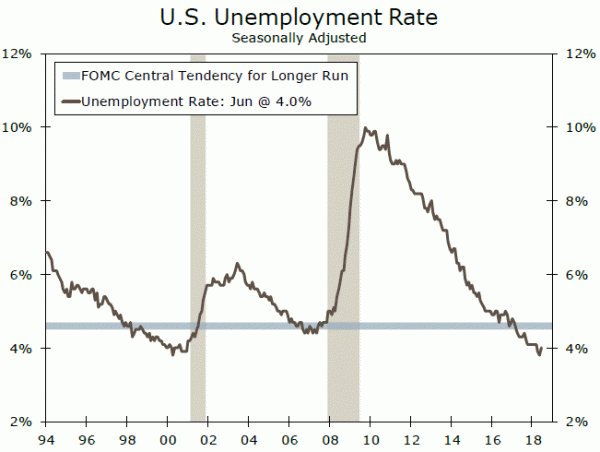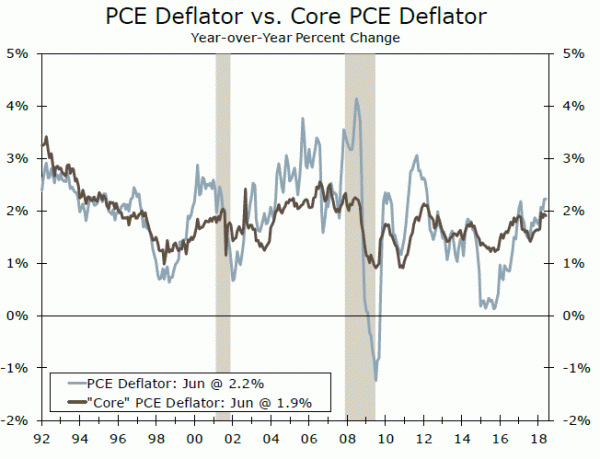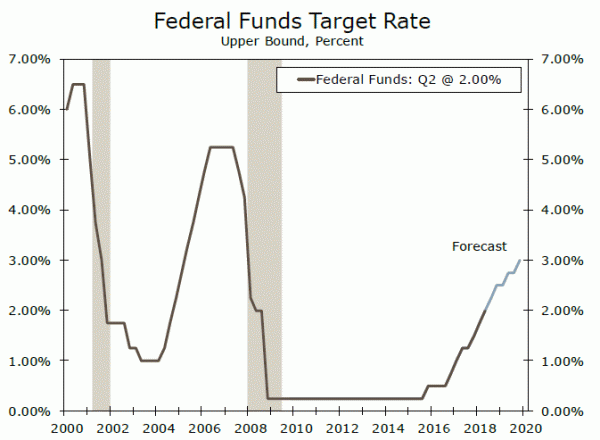The FOMC remained on hold at its policy meeting today, but it made it very clear that further monetary tightening likely will occur in coming months.
FOMC Upgrades Its Assessment of the Economy
The Federal Open Market Committee (FOMC) decided at its meeting today to keep its target range for the fed funds rate unchanged at 1.75 percent to 2.00 percent. The eight voting members of the FOMC unanimously supported the decision, which was widely expected among market participants.
In our view, the FOMC upgraded its assessment of the economy compared to the statement that was released at the end of the last meeting on June 13. When describing growth, the FOMC upgraded its characterization of the pace of economic activity from “solid,” which it used in the last policy statement, to “strong.” The FOMC also said that “household spending and business fixed investment spending have grown strongly.” (In June, the statement simply noted that “growth in household spending has picked up.”) Indeed, the recently released GDP data for the second quarter showed that real personal consumption expenditures rose at an annualized rate of 4.0 percent in Q2 while business fixed investment spending shot up 7.3 percent.
Congress has given the Fed two mandates. First, the Fed is charged with maintaining “full employment.” With the unemployment rate currently at only 4 percent, “full employment” has essentially been achieved (top chart). In its policy statement today, the FOMC said that “job gains have been strong” and that “the unemployment rate has stayed low.” Secondly, the Fed has a mandate to achieve “price stability,” which it defines as an inflation rate of 2 percent. The statement noted that both the overall PCE inflation rate and the core PCE inflation rate are currently running near 2 percent (middle chart).
When describing the current stance of monetary policy, the statement said that policy “remains accommodative.” To underscore the need for further tightening, the FOMC said that “further gradual increases in the target rate for the federal funds rate will be consistent” with its mandate to achieve its two policy objectives.
In sum, there was little in the statement that was released at the end of the meeting to disabuse market participants from the expectation that further rate hikes lie ahead. In the forecasts that the FOMC released in June, a majority of FOMC members expressed their expectation that the Fed will raise rates 50 bps by the end of the year. That is our expectation as well. We, and most other analysts, look for the FOMC to hike rates 25 bps at the September 26 meeting. We expect that the FOMC will remain on hold on November 8, but look for another rate hike on December 19 with two more to follow next year (bottom chart). Unless the wheels of the economy come off in coming months, which we do not expect, further Fed rate hikes seem to be more or less in the cards.















